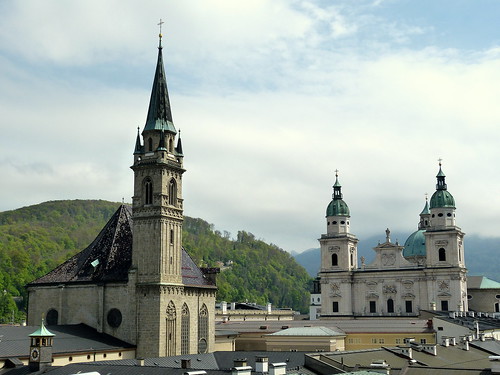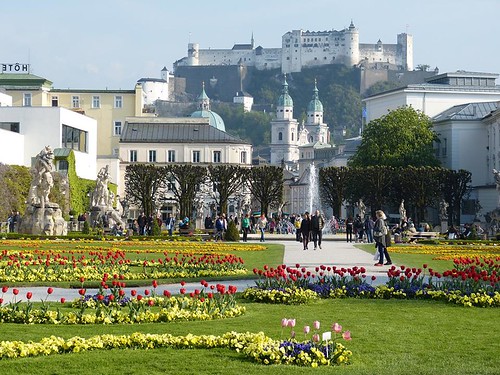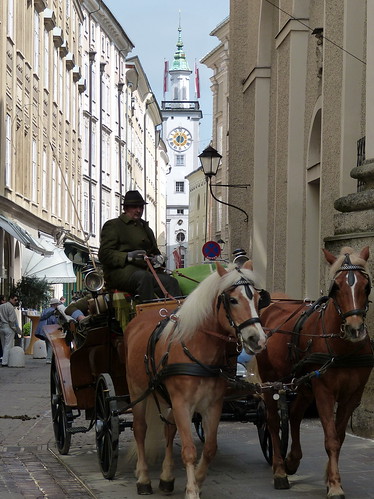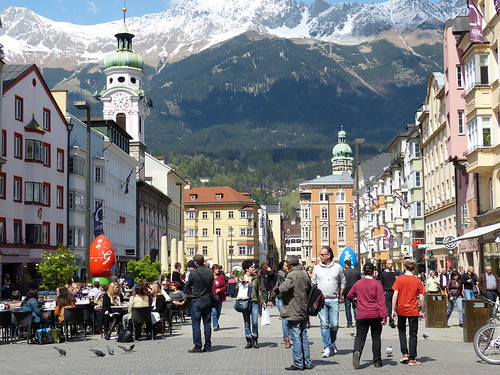Making it to Ait Benhaddou. It was one of my dreams to travel to this citadel at the edges of the desert. It is featured in so many movies that when you arrive there it induces a feeling of déjà-vu, and still you can't believe that you're actually there, staring at this most exotic of the exotic places in North Africa. Our young guide with a blue turban, the alleys of this ghost town made of sand and straw, not to mention the incredible light will be impossible to forget and are one the highlights of my trip to Morocco.
 |
| In front of Ait Benhaddou, in Morocco |
Trying new food and finding out unexpected gems. As I'm sure it is for you, food is always a big part of my travel experience. This year I tried food in Morocco, Portugal, Germany, Austria, Spain and, of course, Italy. Between finding out about the vibrant Asian food scene in Munich and trying out knoedels, gulash and Bauerngroestl in Austria, the German-speaking countries I visited this year were a real surprise in terms of taste buds, and not at all boring, as some people will make you believe.
 |
| Asian food in Munich, Germany |
Ticking off Neuschwanstein Castle from my bucket list. As cliché as it may sound, I have a bucket list of fascinating and enchanted places that I really want to visit, and this fairy-tale castle was at the very top, together with Lake Bled, which I visited in 2013. The trip I took to some of the jewels of the Bavarian Alps - Neuschwanstein Castle, Linderhof and Oberamerggau - revealed to be jam-packed with magic. I loved learning about Ludwig and his crazy romantic ideas!
 |
| Checking out Neuschwanstein Castle in Germany |
Seeing the Sahara desert. I also have a bucket list of landscapes that I want to see at least once in my life: an ocean, a desert, a rainforest, a volcano up close, a canyon, a mighty rainfall, a geyser, and so on (it might be a never-ending bucket list!). Riding a camel, sleeping in a tent in the desert, eating a meal prepared by Bedouins, climbing a dune: I had the opportunity to do all of these when I was in Morocco earlier this year.
 |
| On top of a dune in Erg Chebbi |
Riding tram n.28 in Lisbon. What would Lisbon be without its yellow trams? My last day in Lisbon started with a ride on this old tram. I managed to find a seat next to the window - not an easy thing these days, since the tram is one of the main tourist attractions of the city - and watched Lisbon unfold in front of me, as the tram went up and down the famous hills of the city.
 |
| Women enjoying Lisbon and tram n.28 |
Moving to Barcelona. When I decided to move to Barcelona almost on a whim last July, I didn't know what to expect. Will I find a job? Will I like the city? Will I have the time to explore more of Catalonia and Spain? Yes, yes and yes. Barcelona is pretty exciting by itself, but since I arrived, I have been to Tarragona, Sitges, Montserrat, Zaragoza and Girona. My favourite place outside of Barcelona? Probably Montserrat, a breathtakingly beautiful mountain with a monastery tucked onto a rock - a place that should receive a lot more recognition from international tourism.
 |
| The mountains near Montserrat |
What were your most exciting travel moments of 2014?











